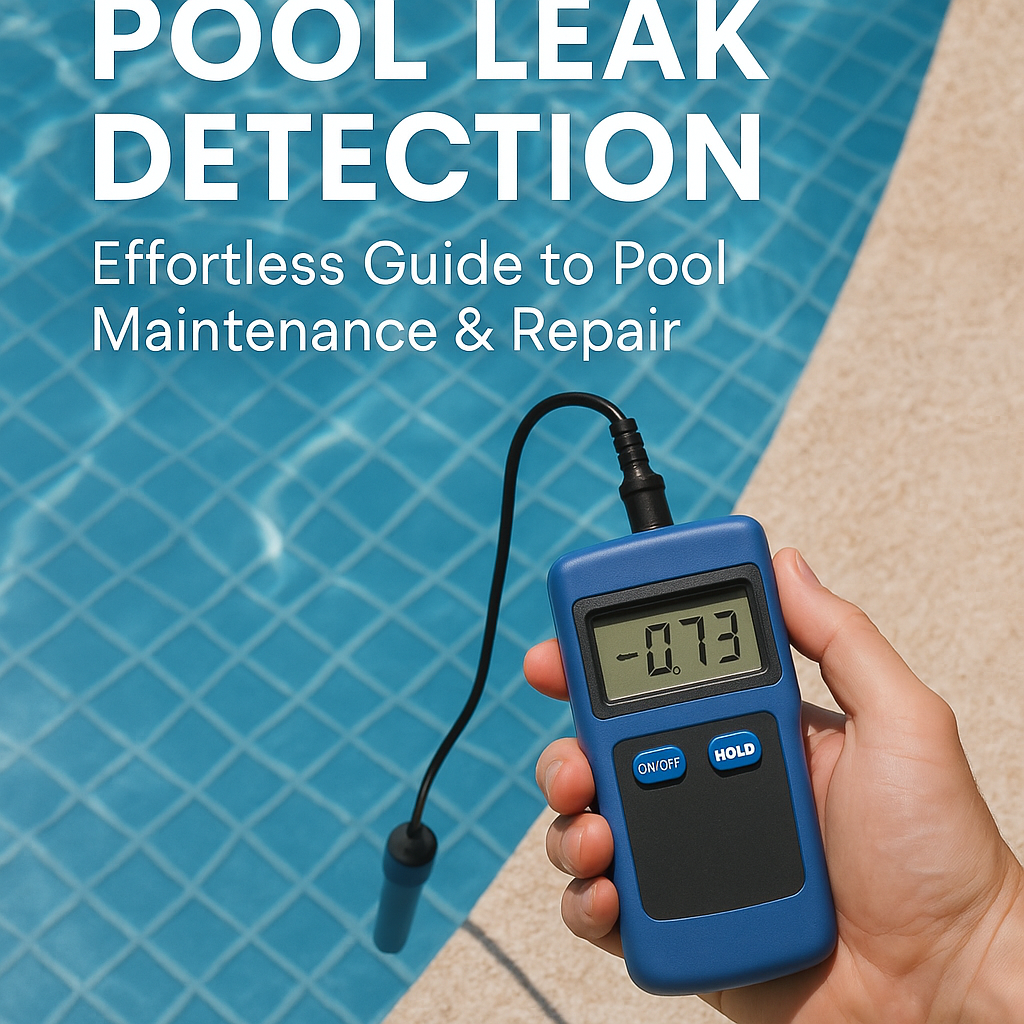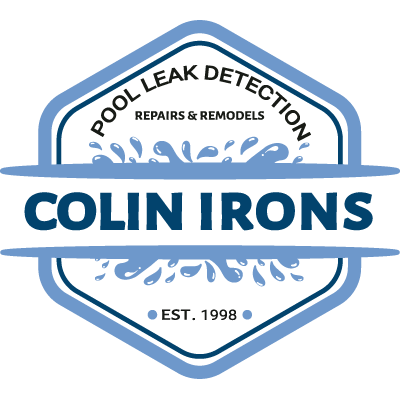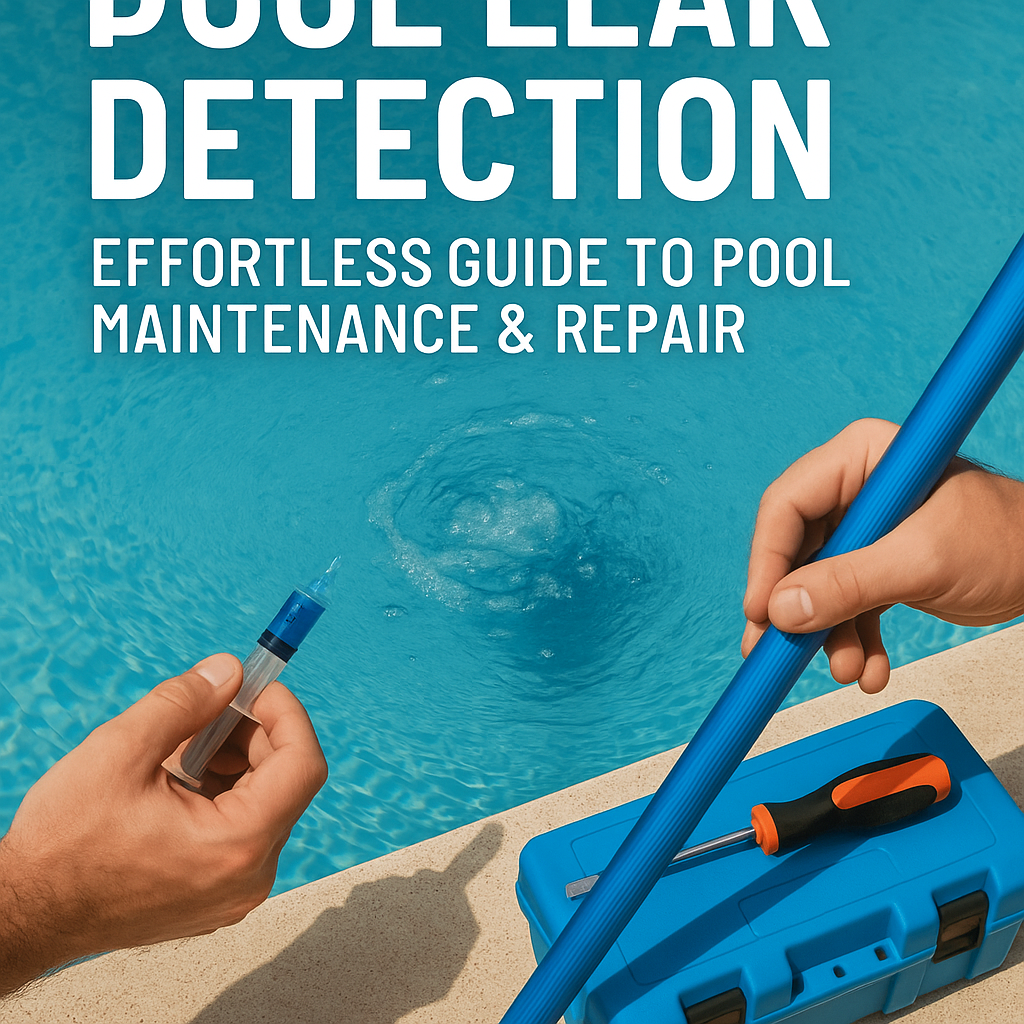Pool leak detection is the first step to take when you notice irregular water levels or damp spots around your pool. It’s a vital component of efficient pool maintenance that, when properly managed, can save you significant amounts of time, energy, and costs associated with major repairs.
Understanding the importance of pool leak detection, the detection methods, and appropriate repair strategies can transform any pool owner into a competent, proactive carer for their luxurious amenity. This effortless guide aims to heighten awareness on these subjects, empowering you to keep your pool in excellent condition for years of enjoyment.
The Importance of Pool Leak Detection

Your pool is a significant investment, and treating pool leaks promptly is crucial to maintaining its structural integrity and optimizing its value. Pool leaks, if left unattended, can lead to severe problems such as a damaged pool structure, increased water bills, water wastage, and even landscape and foundation issues.
Detecting a pool leak early reduces the risk of large-scale damage and costly repairs. Further, consistent pool maintenance helps in spotting potential problems before they become significant, giving you peace of mind that your pool is ready for safe usage at all times.
How to Detect a Pool Leak
Pool leak detection might seem daunting at first, but with knowledge of the right steps and some patience, the process becomes much simpler. The signs of leakage beyond the standard water evaporation rate typically include an inexplicably high water bill, finding damp spots around the pool area, unusual cracks, or water-saturated landscaping.
The bucket test is a simple and effective method you can use to confirm if your pool is leaking. Place a bucket filled with water on your pool steps. Make sure the water in the bucket is at the same level as the pool water. Leave the bucket in the pool for 24 to 48 hours, then compare the water levels. If the pool water level dropped much more than the water in the bucket, it’s likely you have a leak.
More professional methods, such as using colored dye around suspicious areas to monitor water movement or pressure testing of the plumbing lines, may be necessary for more elusive leaks.
Pool Leak Repair Methods
Once you’ve detected a pool leak, the next logical step is pool leak repair. Depending on the severity and the location of the leak, you have various options.
Small cracks or tears can often be repaired using patches for vinyl-lined pools or special sealants for concrete and fibreglass pools. It’s vital to follow the product instructions to ensure the best results.
For leaks in the pool’s equipment or plumbing, you might need to replace the faulty part, such as the filter, pump, or chlorine feeder. Often these repairs are more complex, and hiring a pool professional might be the best course of action.
Should your pool need significant repairs, such as fixing a large crack or dealing with multiple leaks, restorations or even a complete pool renovation might be in order. While costly, these extensive repairs will drastically prolong the life and improve the safety of your pool.
Integrated Pool Maintenance
Incorporating routine pool leak detection into your broader pool maintenance strategy can be a game changer. Regular maintenance tasks, such as cleaning the filters, balancing the pool water, monitoring the water level, and checking the pool and equipment for signs of wear, will keep your pool functioning optimally and spot any issues early on.
The use of automatic pool water level monitors, digital testing kits, and remote monitoring software can also play a significant role in modern pool maintenance strategies. These technologies can help in early detection of potential leaks, enhance the efficiency of your pool’s systems, and reduce manual maintenance time.
In conclusion, efficient pool leak detection and timely pool leak repair are integral parts of comprehensive pool maintenance. Regular inspections and prompt interventions can save you from high repair costs and unnecessary hassle, ensuring a safe and enjoyable pool experience for years to come. Stay informed and proactive in your pool care, and you’ll have peace of mind knowing you’ve done your best to protect your investment.


